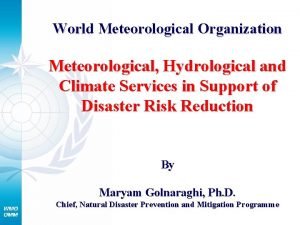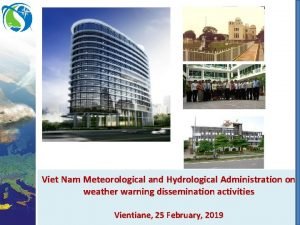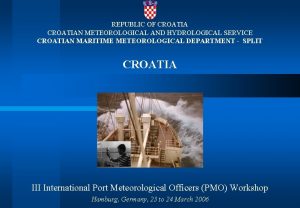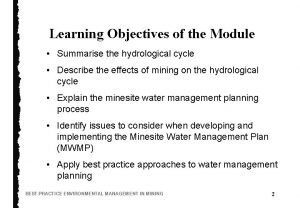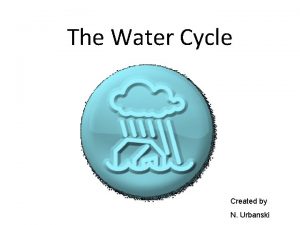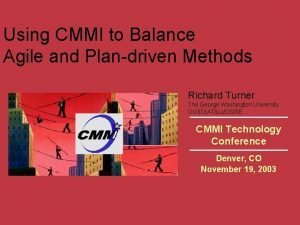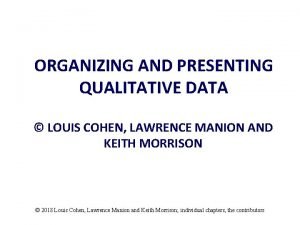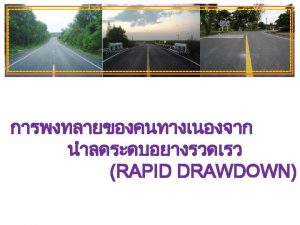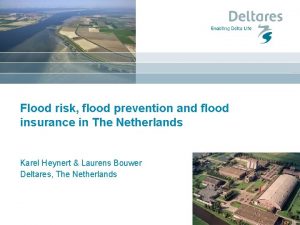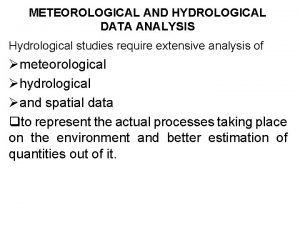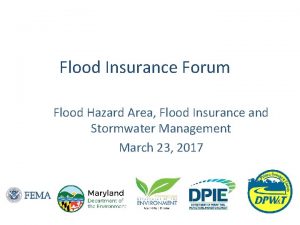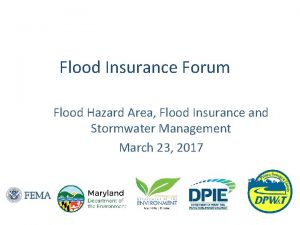Presenting hydrological and data driven flood simulationprediction methods












- Slides: 12

Presenting hydrological and data driven flood simulation-prediction methods to develop a decision-making model Mohammad Zare*, Guy Schumann, Felix Norman Teferle, Patrick Matgen, and Paul D. Bates *rss-hydro 1@outlook. com Funded by Host Inst. Public Partner

Introduction • Changing hydrological conditions as well as the increasing impervious areas due to increasing urban development have caused fundamental changes in the surface water regimes. • Decision making and planning for the prediction of future wateraffecting events and conditions requires the use of models and methods • Appropriate conceptual models and data driven algorithms have been developed and used in many hydrology and water resources management. 1 SIPFLU; improving SImulation and Prediction of flash Flood…. M. Zare

Background and Research Hypothesis • occurrence of floods has resulted in tremendous damages in Luxembourg • It is hypothesized that with simple but novel functionalities in 2 D flood modelling complemented by innovative machine learning (ML) methods, (flash) flood prediction can be greatly improved. https: //today. rtl. lu/new s/luxembourg/a/14657 96. html - February 2020 A parking lot in Ettelbrück turned into a lake overnight Photo: Guy Jallay - May/June 2018 Feb 2020, Luxembourg 2 SIPFLU; improving SImulation and Prediction of flash Flood…. M. Zare

Methods and Research Objectives • In this project The widely and successfully-applied LISFLOOD-FP flood model will be applied which allows computation of water depth flows within rivers and across floodplains. • It is based on a modified version of the full shallow water equations, neglecting only the convection force term, which can be assumed negligible From: http: //www. bristol. ac. uk/geography/research/hydrolog y/models/lisflood/structure/ 3 SIPFLU; improving SImulation and Prediction of flash Flood…. M. Zare

Methods and Research Objectives • combination of LISFLOOD-FP model and a data-driven model has led to an increased accuracy in the modelling of flood events. 4 SIPFLU; improving SImulation and Prediction of flash Flood…. M. Zare

Intra-cluster Variance Cluster 2 0 1 Cluster 1 1 0 5

Methods and Research Objectives • the overall goal of this project is to utilize data-driven stochastic simulation techniques in flood hydrology to complement processbased simulation and prediction of flash floods • This will be done within a data-driven decision-making framework directed towards implementing flood protection measures within a spatial multi-criteria decision making (SMCDM) modeling framework • For-purpose (scenario) evaluation using observations of the 2016, 2018 and 2020 flood events in Luxembourg while incorporating the updated topography products 6 SIPFLU; improving SImulation and Prediction of flash Flood…. M. Zare

7 SIPFLU; improving SImulation and Prediction of flash Flood…. M. Zare

Project Plan • WP 1 a/b: Collecting all required hydrological, land cover/use, river and floodplain topography data and evaluating their adequacy. All these data are open data and centralized. • WP 2: Flood modelling using the LISFLOOD-FP code • WP 3 a/b: Develop data driven methods to complement and integrate with the hydrodynamic model. • WP 4: Develop a spatial decision-making model framework for implementing flood protection measures • WP 5 a/b: Validate hydrodynamic and data driven methods. The final task of this WP includes the vetting of all model results for public release. 8 SIPFLU; improving SImulation and Prediction of flash Flood…. M. Zare

Expected Outcomes/ Impact • Little progress has been made in joining up the available large open data with scientific advances to address the problem of floods and their impacts on the global economy, on regional ecosystems and local communities • develop innovative methodologies for estimating the changing risk from floods based on land use scenarios and climate change projections 9 SIPFLU; improving SImulation and Prediction of flash Flood…. M. Zare

Expected Outcomes/ Impact • Successfully translate basic research results into useful information for the public • Creation of valuable flood maps in areas where it matters - while accounting for effects of land use and climate change • developing SMCDM will help decision makers determine suitable locations and methods for flood protection measures 10 SIPFLU; improving SImulation and Prediction of flash Flood…. M. Zare

Thank you! Questions 11 SIPFLU; improving SImulation and Prediction of flash Flood…. M. Zare
 Ways of presenting information
Ways of presenting information National meteorological and hydrological services
National meteorological and hydrological services Vietnam meteorological and hydrological administration
Vietnam meteorological and hydrological administration Croatian meteorological and hydrological service founded
Croatian meteorological and hydrological service founded Hydrological
Hydrological Heat transfer in water cycle
Heat transfer in water cycle Illustrate the water cycle
Illustrate the water cycle Hydrological prediction center
Hydrological prediction center Using risk to balance agile and plan driven methods
Using risk to balance agile and plan driven methods Organizing qualitative data
Organizing qualitative data Presenting qualitative data
Presenting qualitative data Metal coping fpd
Metal coping fpd Chapter 18 visual merchandising and display
Chapter 18 visual merchandising and display

